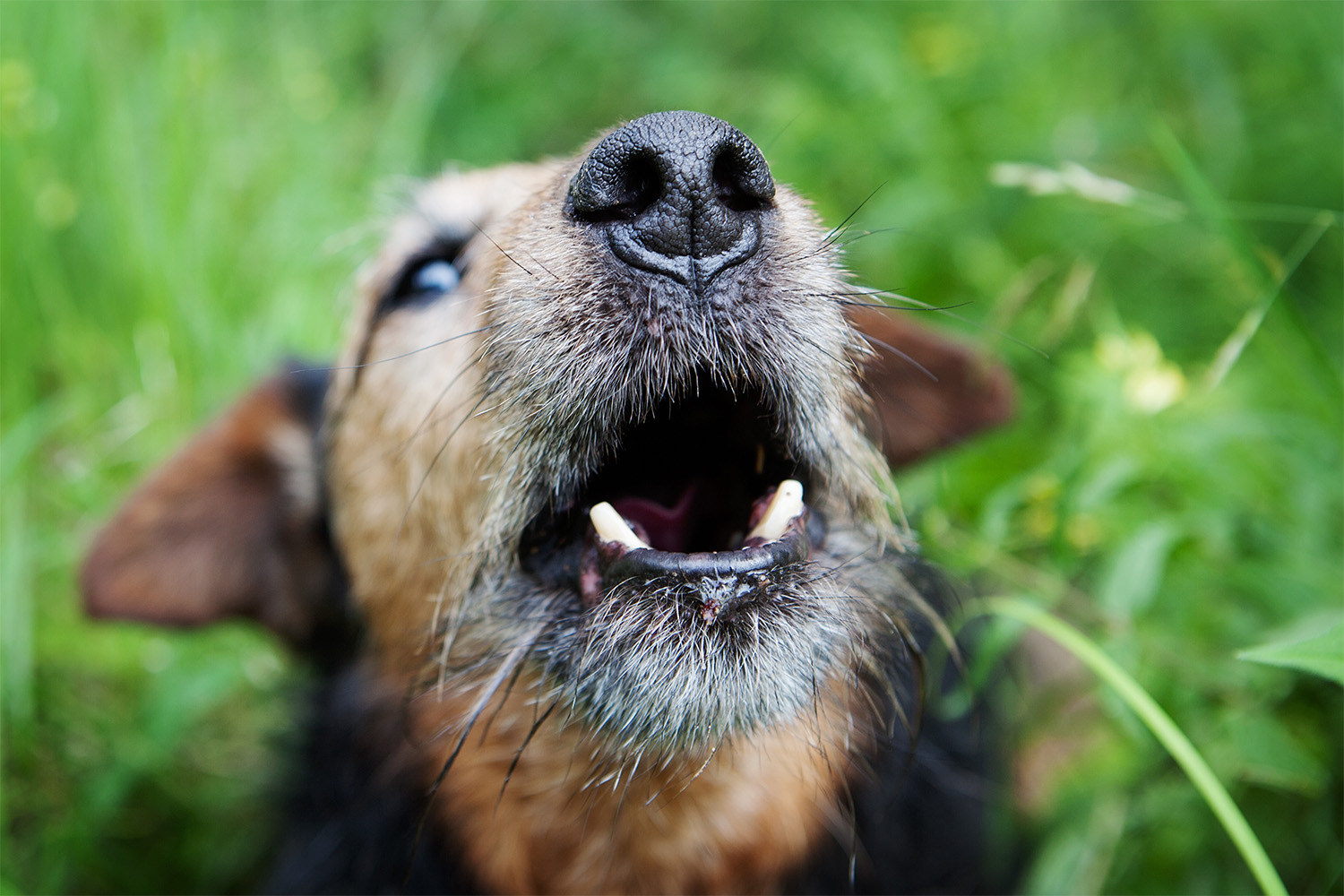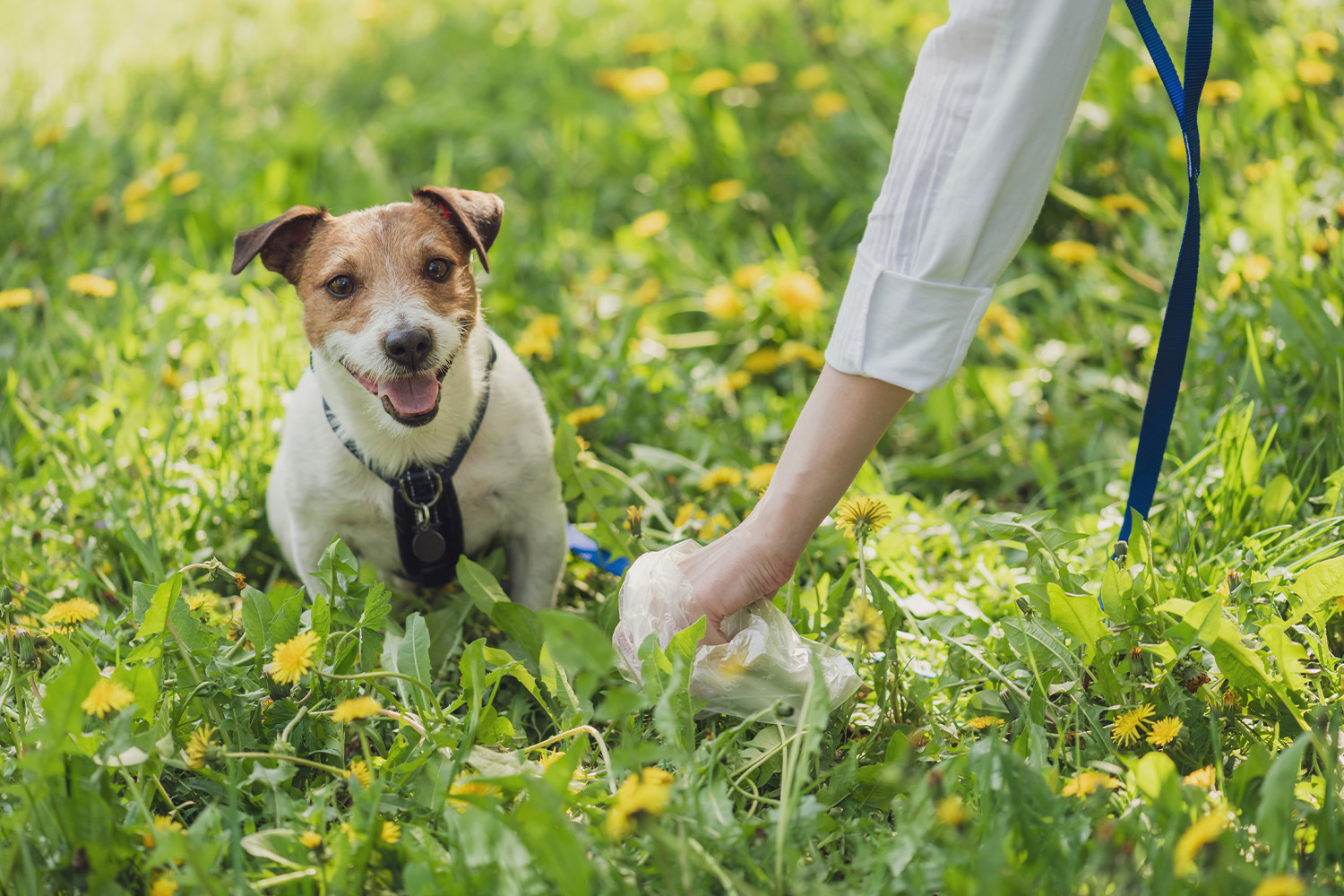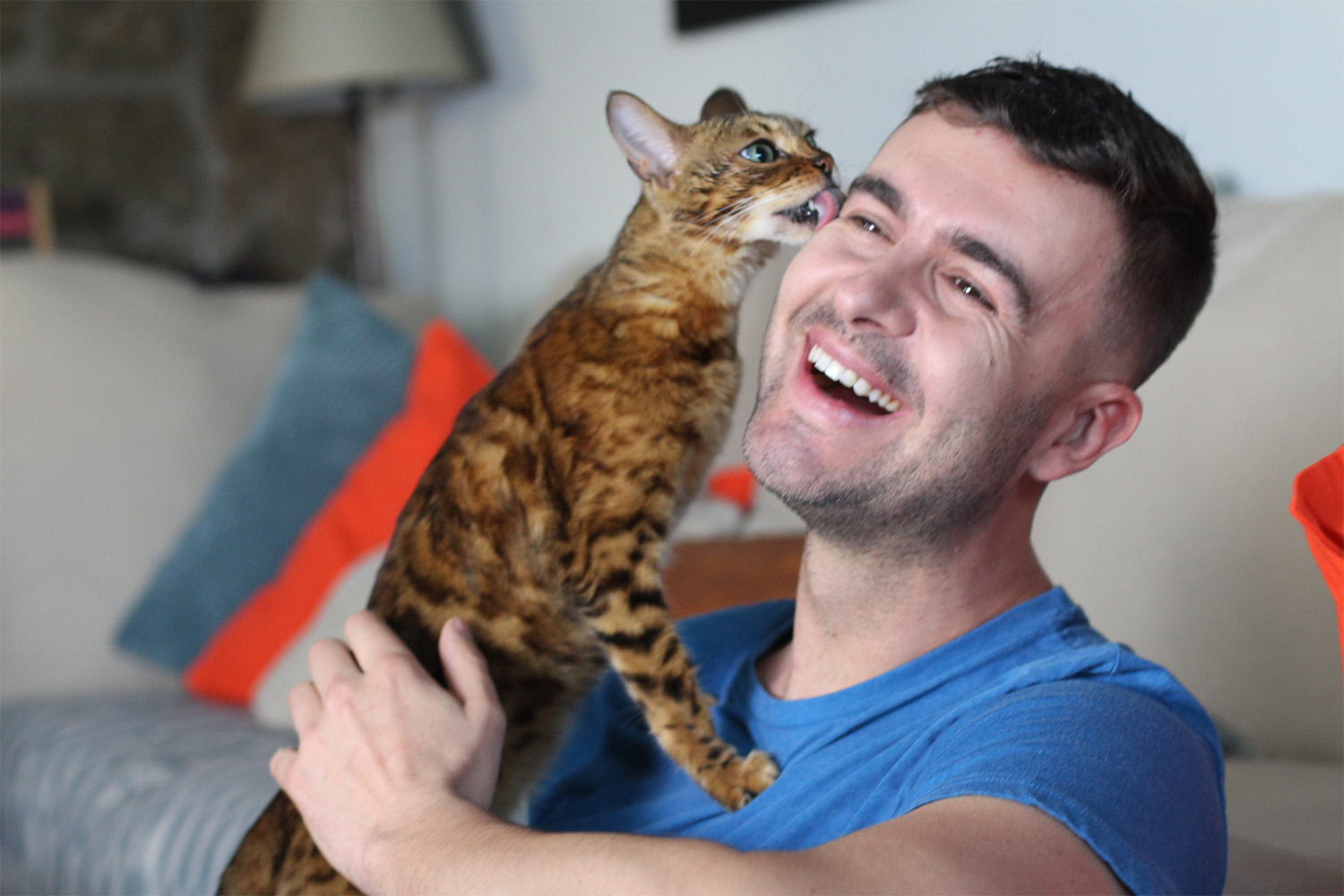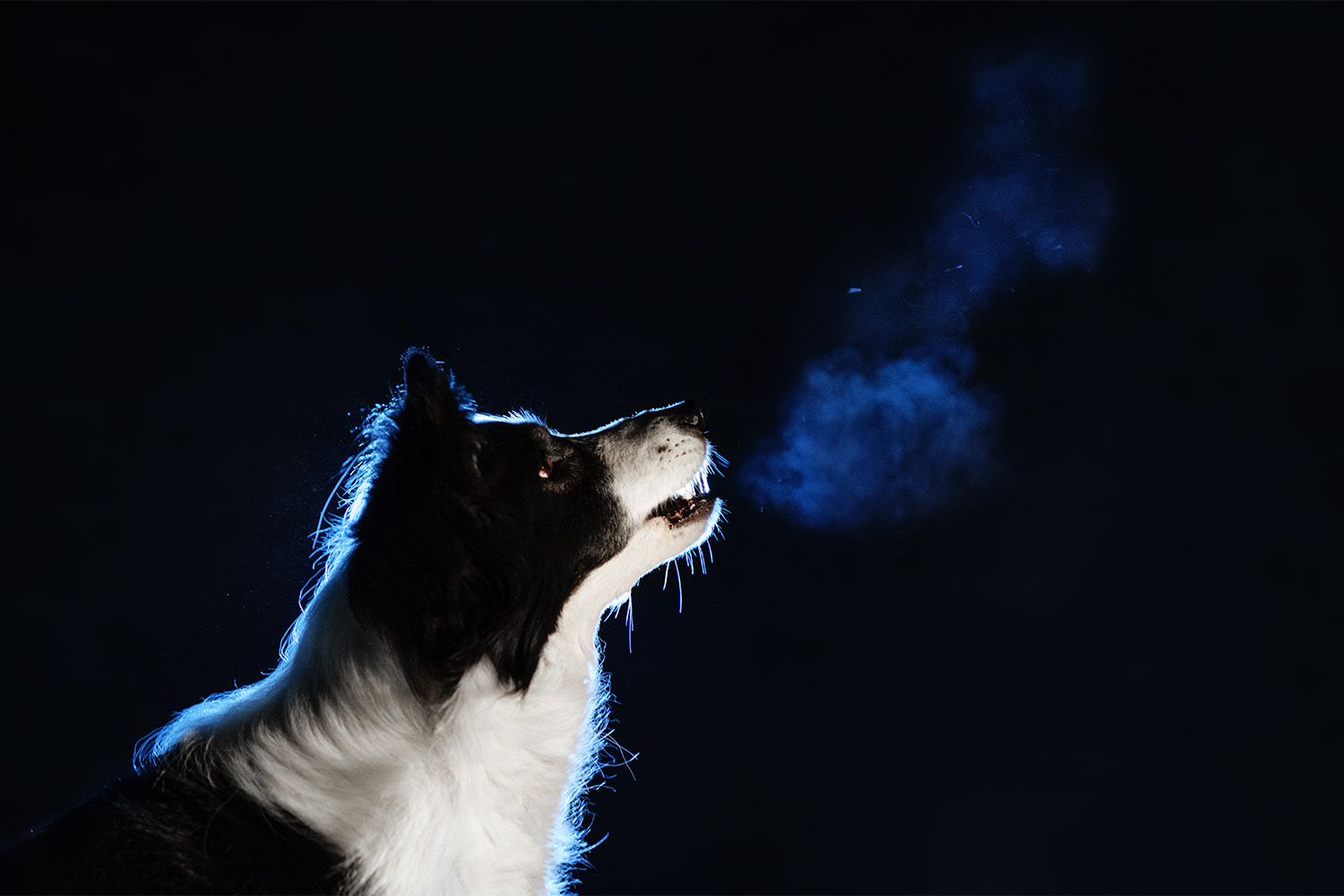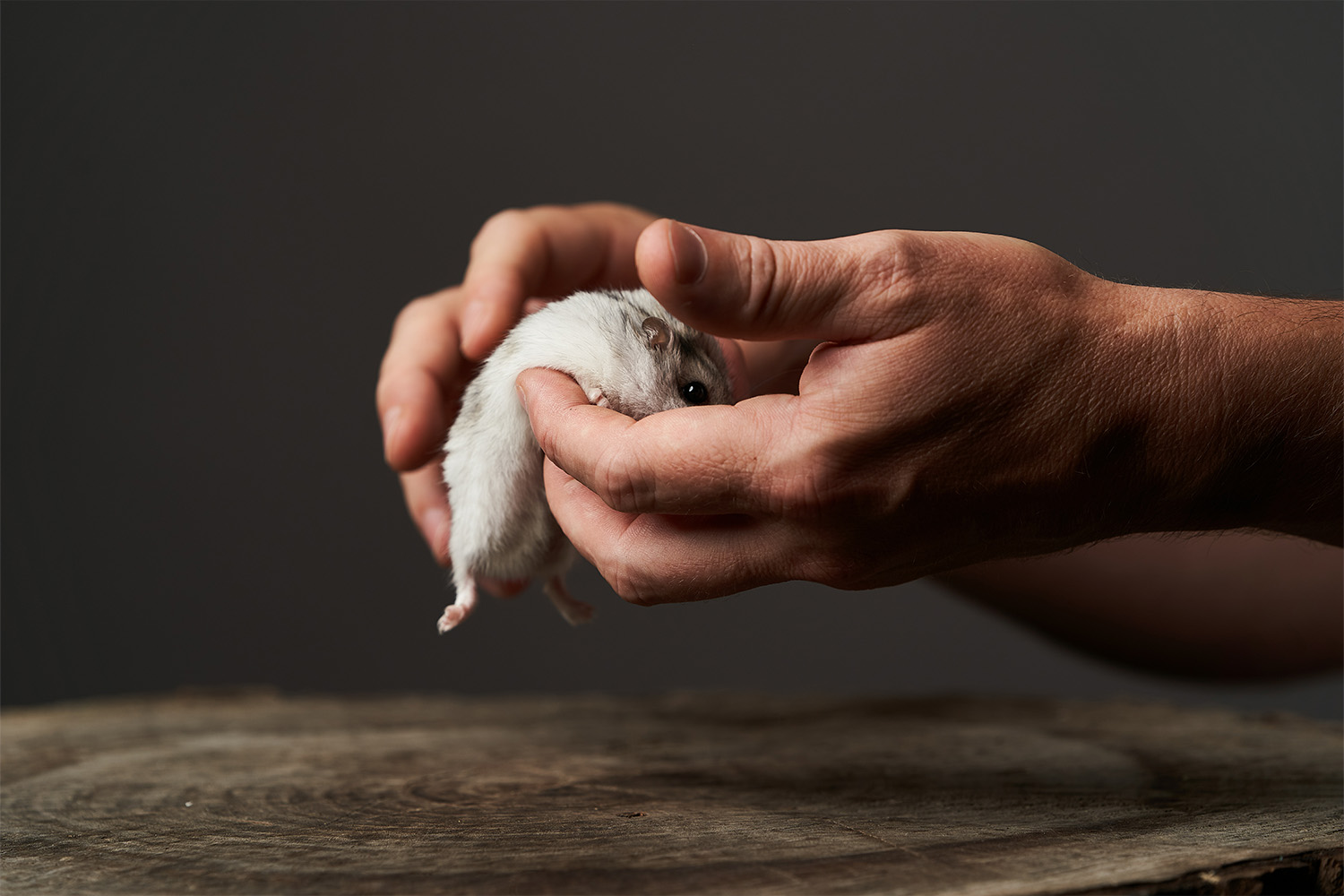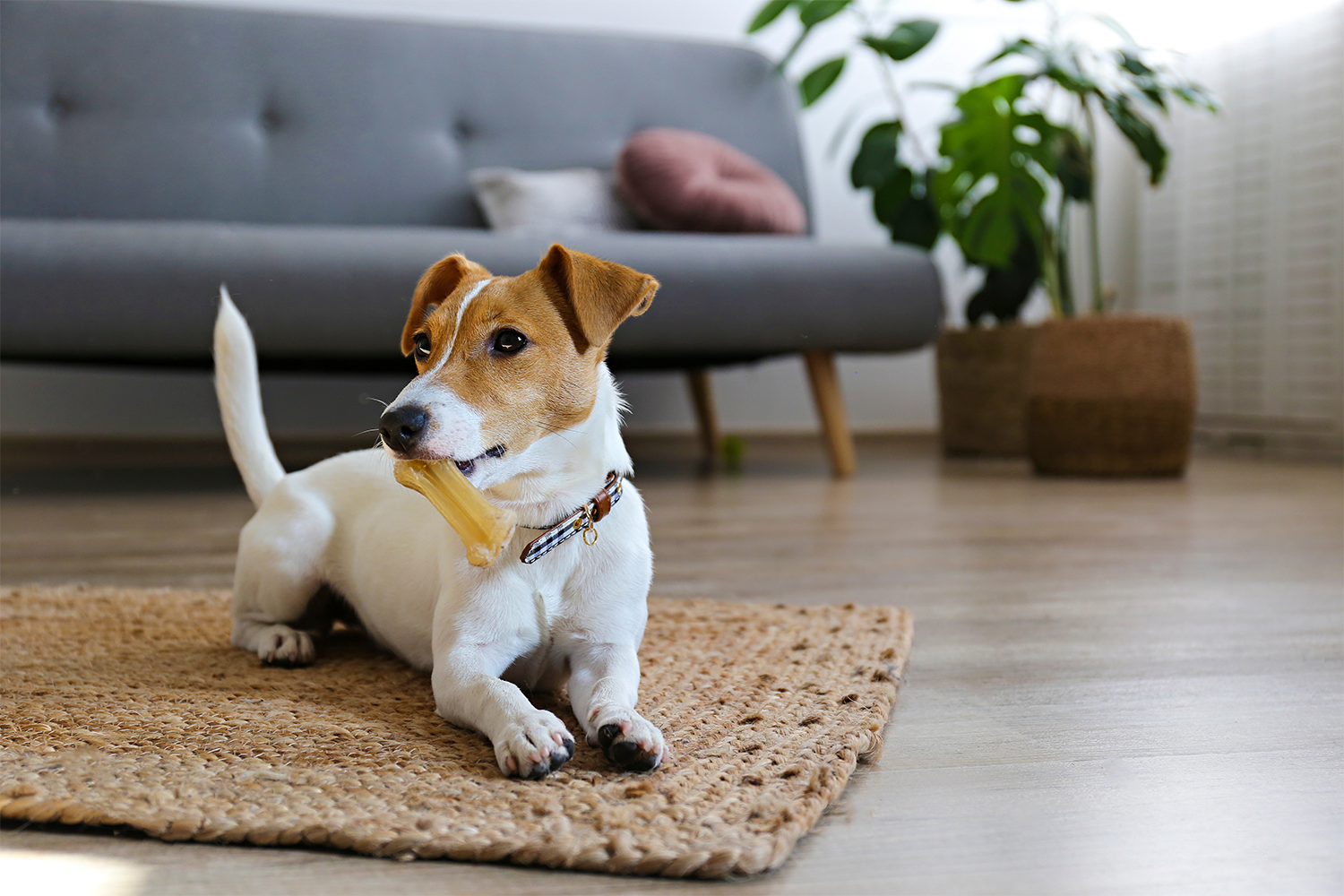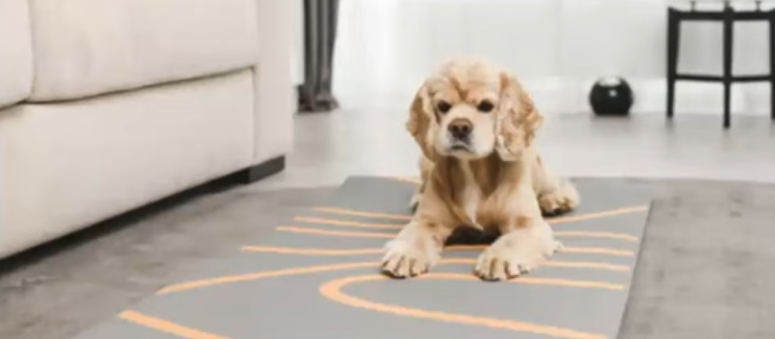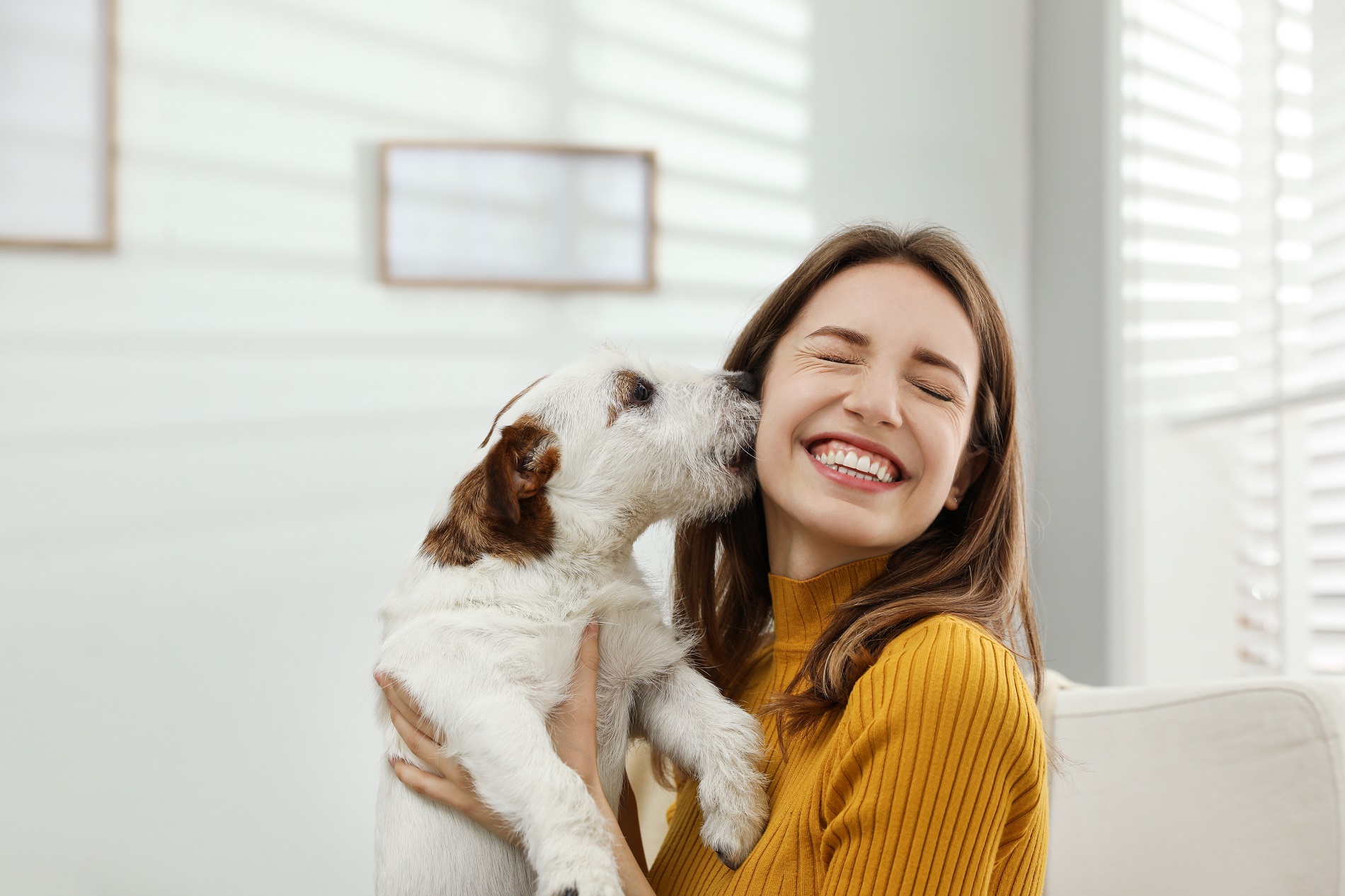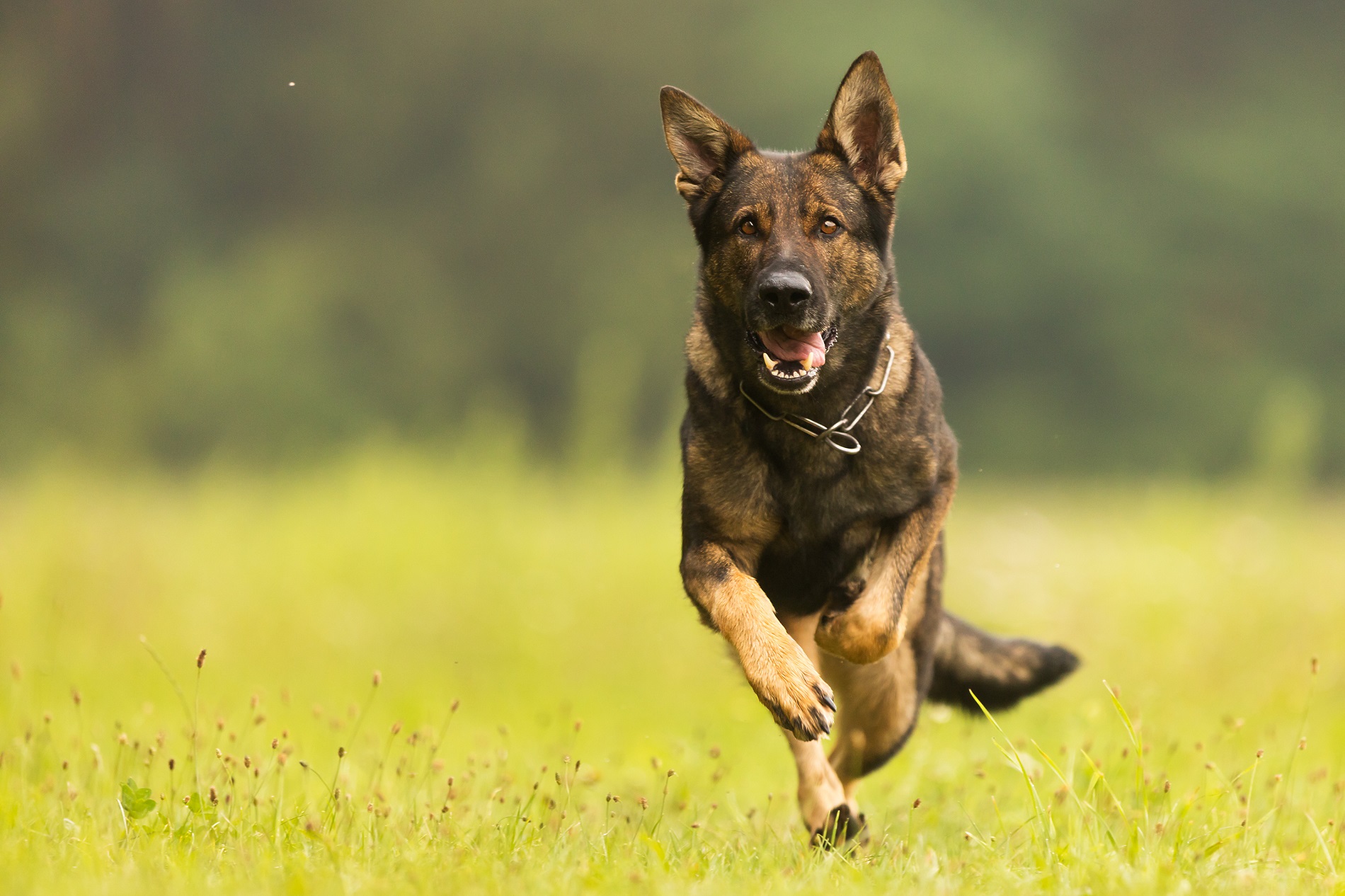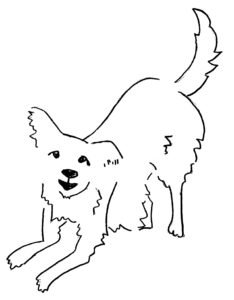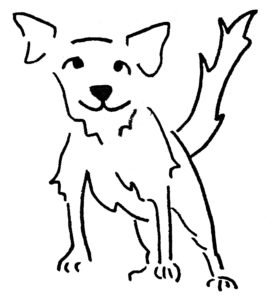Humans and dogs have been coexisting together for thousands of years, and the amount of love, joy and support that dogs contribute to society is undeniable. However, aggressive behavior leading to dog bites is a serious matter not to be taken lightly. Education and awareness are the key tools for dog lovers (and every other human!) to prevent a tragedy.
So, if we love and depend on each other so much, what causes a dog to bite a human? How can we tell if a dog is feeling uncomfortable or aggressive? What should you do if you recognize aggressive behavior in your dog? How do we protect children and educate them about dogs? Let’s explore how the brain of a dog works in order to answer these questions …
Dog Aggression and Biting
Puppy Socialization
A common misconception is that aggressive dogs were “abused” as puppies, explaining their fearful, unbalanced, protective, and unpredictable behavior. Although there are certainly very sad cases of dog abuse or abandonment causing lasting mental health problems, abuse is not actually the origin of most episodes of human-directed dog aggression.
Instead, puppy socialization, specifically the lack of puppy socialization between the ages of 3-14 weeks, will often dictate how a dog is able to process and cope with his surroundings as an adult. At a young age, your puppy’s brain is developing and soaking up knowledge about what to expect throughout his life. They are learning what is considered “safe,” and what is considered “unsafe.” Puppies that are lacking socialization and basic obedience and dog training are less likely to have the coping skills needed to manage their fear in varying situations. Once a dog is fearful, it is normal and natural for him to use aggression to communicate his feelings and go into protection-mode.
So, what can you do? If you are raising a puppy, make sure to expose him in a positive way (with plenty of treats!) to varied experiences, sights, and sounds. This includes walking on different surfaces, being close to different types of vehicles, other dogs and animals, and a meeting variety of people and children. See our article on “Things You Need for a Puppy” for more tips. Taking the time to socialize your puppy at a young age means he will become a confident, happy companion for you and your family.
Crate training and basic behavior training for puppies will also help them learn how to calm themselves and to look to their pet parent for direction and comfort in times of uncertainty.
How Dogs Express Irritation and Fear
In order to understand how dog bites and fights happen, deciphering how dogs communicate is key. Dogs rarely bite without first being provoked, and dogs indeed give signals to us that they are feeling upset. We know that dogs speak a different language than humans do—and it is our responsibility to learn how to “speak dog” and understand what our canine companions are telling us!
What clues do dogs give that they are feeling fearful and uncomfortable? It turns out that dogs use very recognizable forms of body language to tell other dogs, humans and other species how they are feeling. Dogs use different sounds, facial expressions, eye and body movements, ear positioning, posture, fur and tail position to communicate how they are feeling. We just need to be able to recognize these clues!
Dominant/Aggressive: A dog who is feeling dominant and aggressive in a situation will have their ears forward, pupils dilated, with eyes holding a firm stare at the “enemy.” Their face may show wrinkles in the forehead and nose, with the lips curled to show their teeth as potential weapons, sometimes with an open mouth. This dog may be growling and/or barking as a warning as well. The tail is raised, stiff, and bristled, the fur on his upper and lower back (“hackles”) are raised. This dog is telling everyone that he will act aggressively if he feels his turf is being threatened. When dogs are in the dominant/aggressive state, they are highly stimulated and may attack or bite at ANYTHING that draws their attention — use extreme caution around this dog.


Fearful/Aggressive: Fear aggression is likely the most common cause of dog bites—simply because we humans are not very skilled at recognizing fear in our dogs. The result? A dog tells us in subtle ways that he is feeling fearful, and as these subtle signs are ignored, the dog feels he has no choice but to “go big or go home” to protect himself—resulting in a bite.
A dog who is fearful will hold his head lower and bowed down a little, and he may be holding his ears back. You might notice his pupils are dilated and focused on the “threat” he is perceiving. His face will have wrinkles at the nose, and the lips may be curled showing some teeth. He may also be growling a warning as well. A fearful dog will sometimes face the individual that is the perceived threat, tuck their tail between their legs, and raise the hackles over their upper and lower back. Their body will be lowered and muscles tight and stiff.
Alternatively, a fearful dog may turn his head away from the object causing him to be scared, and move his eyes to keep tabs on what is going on—you can see the whites of the dog’s eyes in this situation, called “whale eye.” If you see a dog with a whale eye, be mindful that this dog is feeling threatened and scared. The next step for him to protect himself is to attack if he feels provoked, so use extreme caution if you see these signs.

Situations That Commonly Cause Aggression
Just like us, dogs have feelings, fears, and the instinct to protect themselves from what they perceive as threats. Each dog has her own boundaries, and it is our job as pet owners to prevent those boundaries from being disrespected. One of the most difficult conundrums associated with protecting our dogs from fearful situations: many times, dogs and humans do not even see eye to eye on what constitutes a “threat”! This is where learning dog body language is key to understanding your dog’s needs.
For example: We see our friends coming over to hang out at the house as a great way to spend the day–and some dogs may see the situation as unpredictable strangers invading their turf, possibly to harm them.
Another example: We see a sweet child who loves to hug and love on dogs–and some dogs see it as an unpredictable animal who is invading their personal space, and potentially may hurt them.
Not all dogs will react the same way to the same situation, of course! It is the pet parent’s responsibility to read their dog’s body language and gauge the safety of a given situation. If your dog feels uncomfortable, it is essential to alert the humans involved and remove your dog from the situation for the collective safety and security of dogs, humans, and other animals. It is also important for children to learn that not all dogs love to be pet and hugged, and to always ask the dog’s owner for permission to approach a dog and also where the dog likes to receive scratches.
Common Situations Leading to Dog Bites
It is also important to recognize situations that are inherently more likely to lead to an uncomfortable dog and an unwanted dog bite. Here are some common situations where dogs can potentially become aggressive if they are pushed beyond their threshold:
– Dog parks where emotions are heightened, and dogs are unleashed
– Children approaching, petting, or hugging them
– Taking away a prized toy, food item, or food bowl (resource guarding)
– Other dogs or animals approaching
– “Protecting” their home territory from passers-by on the street, or delivery/postal workers
– Unfamiliar visitors into the home
– At unfamiliar locations like the veterinary clinic, grooming salon, or boarding facility
– Petting or touching them while eating
– Protecting an injured body part, or if they are feeling pain
– Sudden movements around them (especially children)
– Protecting body parts that they do not like handled (especially if a child is pulling ears, petting their fur in the wrong direction, touching paws, pulling the tail, etc)
– Redirected aggression towards something nearby when the stimulus is out of reach
– Male or female competition (especially male dogs that are not neutered)
– Frustration from being restricted
– The instinctive prey drive (especially towards smaller animals)
– Overexcitement
– Older dogs, and senior dogs with cognitive decline (dementia)
A Word About Dog Breeds and Aggressive Behavior
We’ve all been pretty conditioned to recognize certain types of dogs as the “dangerous breeds.” The classic image of Pitbulls, Rottweilers, and German Shepherds is that these dogs were bred to protect humans, and therefore all members of the breed are aggressive and not worthy of our trust. Sometimes certain breeds are even “banned” from living in certain places. However, those stereotypes are just that and these dogs continue to endure the stigma.
The reality is that any dog– no matter the breed– can become fearful, irritated, uncomfortable, and territorial — and potentially become aggressive and bite.
Shih Tzus, Terriers, Shelties, Labs, Bulldogs, Yorkies, Cocker Spaniels, Chihuahuas (especially chihuahuas!), Dachshunds … these breeds might not be the typical “poster dogs” for aggressive behavior, but are certainly responsible for their share of dog bites.
Here are the position statements that animal groups in the United States take in regards to breed bans, breed aggression, and blanket labeling or some dog breeds as “dangerous”.
American Veterinary Medical Association “Dog bite statistics are not really statistics, and they do not give an accurate picture of dogs that bite. Invariably the numbers will show that dogs from popular large breeds are a problem. This should be expected, because big dogs can physically do more damage if they do bite, and any popular breed has more individuals that could bite. Dogs from small breeds also bite and are capable of causing severe injury. There are several reasons why it is not possible to calculate a bite rate for a breed or to compare rates between breeds.”
“Statistics on fatalities and injuries caused by dogs cannot be responsibly used to document the ‘dangerousness’ of a particular breed, relative to other breeds, for several reasons.”
American Veterinary Society of Animal Behavior “Any dog may bite, regardless of the dog’s size or sex, or reported breed or mix of breeds. The AVSAB’s position is that such legislation—often called breed-specific legislation (BSL)—is ineffective, and can lead to a false sense of community safety as well as welfare concerns for dogs identified (often incorrectly) as belonging to specific breeds.”
Centers for Disease Control and Prevention The CDC recommends against using breed as a factor in dog-bite prevention policy and states: “Any dog of any breed has the potential to bite.”
The bottom line: EVERY dog has boundaries (just like people!), and ANY dog can bite when their personal threshold for fear or pain is exceeded.
What if Your Dog Shows Aggression?
First of all, well done for recognizing that your dog is exhibiting some problematic behavior and needs help. We all love our dogs so deeply that it can be very difficult for pet parents to acknowledge that their beloved pooch may be dealing with some real mental health issues. However, the sooner that aggression is noted, and treatment or rehabilitation is initiated, the better the possible outcome. This is especially true for puppies: play-biting can be cute when they are small, but your cute puppy will soon be an adult who also thinks using his mouth on people is okay, and at that point it is much more difficult to curb the issue.
Visit Your Veterinarian First
If you witness aggressive behavior and biting by your dog, take note of the context surrounding the incident, who was involved, how people around your dog reacted, and how your dog acted throughout the event.
Your veterinarian should be the next stop for a physical exam to check for any painful conditions that might have led to your dog’s aggression, diagnostic blood and urine testing to assess internal baseline body functions, and an in-depth discussion about the situation. Your veterinarian will ask what may prompt your dog to act aggressive, fearful, or stimulated to bite (videos of incidents are invaluable!).
Just like in people, some dogs suffer from anxiety, especially in new unfamiliar situations. Your veterinarian can determine if your dog’s anxiety may serve as an underlying cause. If anxiety is determined to be a contributing factor, medications to calm your pup may be prescribed. Training with desensitization and counterconditioning techniques are often beneficial to calm your dog’s fears and help him learn to regulate his emotions in certain situations.
Medications are not meant to sedate dogs or change personalities, but instead to calm dogs with anxiety enough so that they can learn how to cope with their emotions and form a positive view of something that was previously very scary to them. Some will benefit from a referral to a Board-Certified Veterinary Behaviorist for a thorough evaluation and treatment plan to help your dog.
Avoid the Stimulus
Avoiding situations that will stoke your dog’s fear and potential aggressive tendencies can be an effective way to control the issue. Just do not put your dog in a situation where he may feel fearful and become aggressive. For example, if your dog is aggressive towards other dogs—simply keeping your dog away from other dogs can almost entirely eliminate the issue.
If your pup is scared of new people, make sure to discourage people from approaching and petting her while out on walks, and don’t bring her out into crowded, unpredictable public spaces. Crate-training her and utilizing the crate to secure your dog in her “safe space” prior to visitors entering your home is another simple, effective tool to prevent stressful situations.
Basket Muzzles
In some situations, avoiding the stimulus may not be possible. For dogs encountering known stressful triggers, basket muzzles can be literal lifesavers! When used properly and appropriately, basket muzzles are an excellent way to protect both people AND your dog from a dog bite situation. (Note: Nylon muzzles are not recommended because they do not allow the dog to pant and are not secure.)
You can train your dog to wear a basket muzzle happily and associate the muzzle with positivity and yummy treats. See “The Muzzle Up Project” for a step-by-step guide, complete with videos, to train your dog to wear a basket muzzle with zero stress.
Using your dog’s basket muzzle in situations where she is known to bite can make both you and your pup more relaxed and confident that no injuries will occur. Consulting your vet for advice on use, type, and fit will ensure that your dog is comfortable and safe while wearing her new “outfit.”
We understand the stigma you may feel from others if your dog is wearing a muzzle. Try to keep in mind that for anyone who understands dog behavior, a basket muzzle is the sign of a responsible pet owner! Situations in which your dog bites need to be avoided, and the safety of others is paramount.
Knowing that your dog will react aggressively in a situation requires the pet parent to be an extremely responsible and observant caretaker in order to protect everyone they may encounter with their dog. A professional evaluation by your veterinarian and a licensed dog trainer/veterinary behaviorist is always recommended to maximize safety.
When a Dog Bites a Human
Since we share our world with dogs, it is very important that we recognize how other dogs are responding when approaching them on the street, in a dog park, in a home, or inside a building. If a dog’s warnings to “stay away” are ignored, she may be pushed beyond her threshold and feel the need to become aggressive and bite. Dogs rarely bite or attack unprovoked, and understanding the visible “warning signs” that dogs communicate can keep both dogs and humans safe. Children are especially vulnerable to altercations with dogs, as they want to snuggle every dog they see and often are oblivious to the warning signs that dogs are trying to communicate.
What if the worst-case scenario happens, and a dog bites a person? Dog bites should be followed up with appropriate medical attention and reported to animal control as required by local county and state regulations. Unfortunately, the consequences of biting a human are much more severe when the dog is not appropriately vaccinated for rabies–so make sure your pooch is up-to-date on his boosters, just in case!
Keeping the Peace
Dogs have been wonderful human companions for thousands of years and our relationship is mutually beneficial. Sometimes though, people may not realize when a dog may be feeling threatened or provoked, nor do they understand the dog’s body language, sometimes resulting in an aggressive encounter. Dog bites are common and serious, can be severe, and happen very quickly–so avoidance of these situations is our greatest tool in preventing them.
By socializing your puppy at a young age, you can prevent a great deal of future mental distress and fear. If your dog is exhibiting fearfulness in certain situations, train him to wear a basket muzzle, and seek veterinary guidance on how to desensitize him to triggers—reminding him that the world is a happy place! Avoid stressful situations for your dog when it is practical, and communicate with other humans about your dog’s personal boundaries.
As a pet parent, it is important to know your dog’s comfort level with different situations and act accordingly to keep everyone safe. Enlisting the help of your veterinarian or a Veterinary Behaviorist and licensed certified trainer can help give your dog the help she needs, and the best chance to modify her behavior and live peacefully in your home and society.
Our AskVet Veterinarians are available to discuss all of your pet’s needs 24 hours a day, 7 days a week. Whether you have an immediate need or are looking to improve your pet’s overall wellbeing, just sign into your account and one of our friendly and knowledgeable veterinary experts will attend to your needs, no appointment required!



